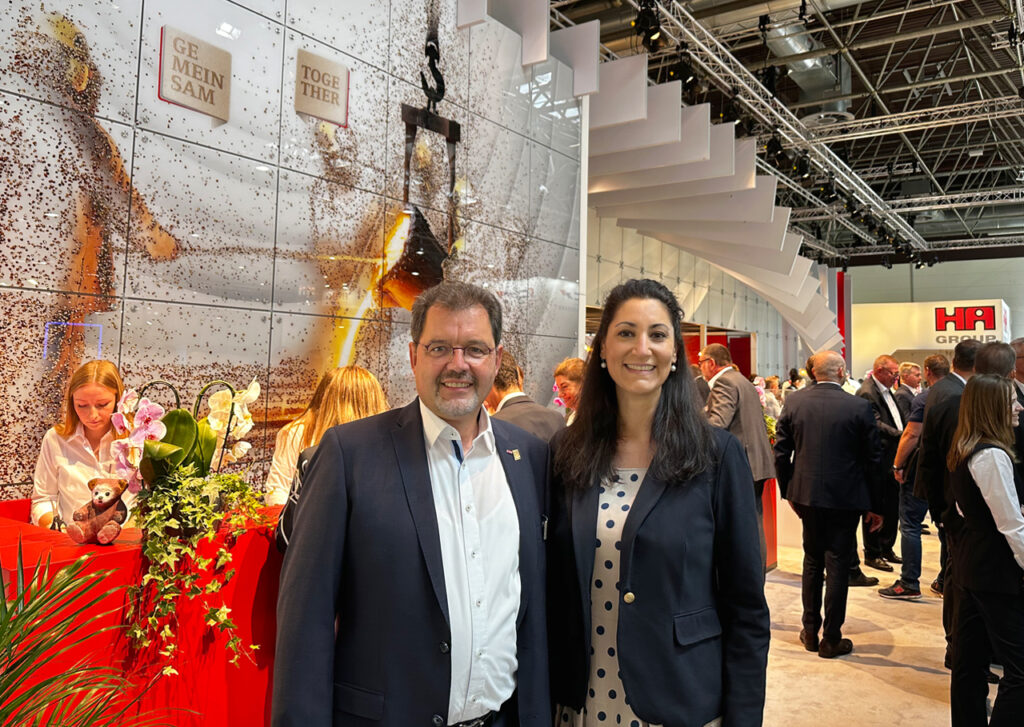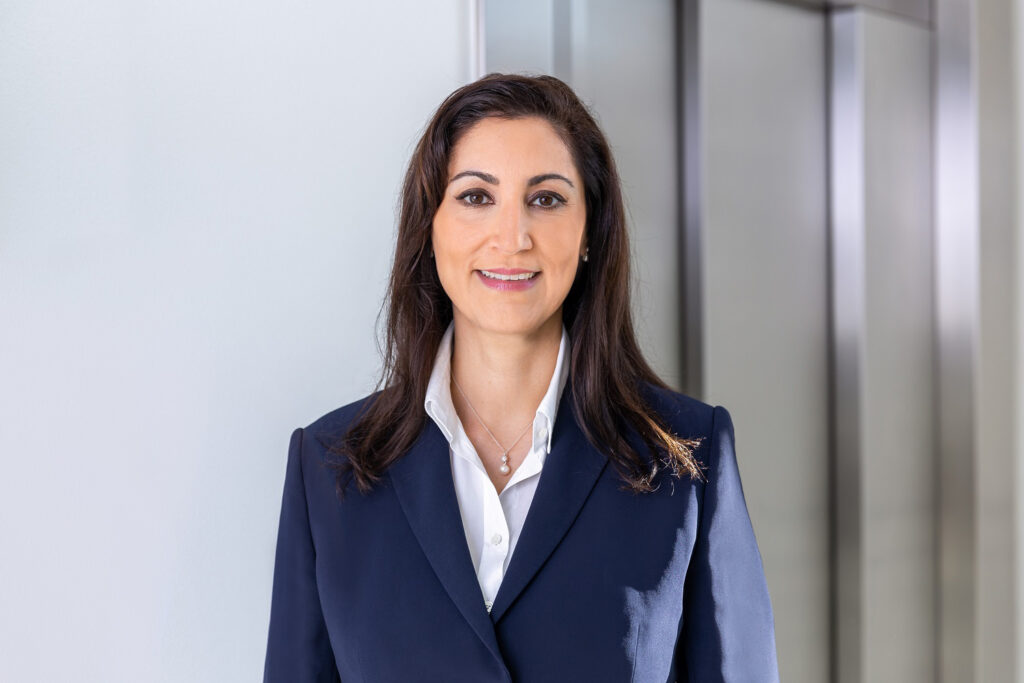In this interview, Dr Kuhlgatz highlights how the industry is part of the transformation process and what challenges and obstacles stand in its way.
Dr Carsten Kuhlgatz is a member of the supervisory board of Hüttenes-Albertus Chemische Werke GmbH (HA-Group) and shareholder and managing director of Albertuswerke GmbH as well as President of both the World Foundry Organization (WFO) and the German Foundry Chemicals Association (IVG). He is also on the board of ChemieNord (the chemical industry employers’ association for Northern Germany) and a board member of the Regional Association North of the German Chemical Industry Association (VCI).

Where are the products of IVG members used?
The fields of application for foundry chemicals are diverse and, at the same time, necessary for achieving the goals of the energy transition and the Green Deal – thus for the entire transformation process.
This starts with small parts in utilities management, such as water taps or joints – ranging all the way to heat pumps, mechanical engineering and pump construction where medium to very large-sized products made of casting pieces are required that can withstand high mechanical stress. Further examples are uses in agricultural engineering and energy generation. The lion’s share goes into car and truck construction.
In short: Casting products are everywhere and, what is even more important, the most of them have foundry chemicals in them. This is because without a mould into which the liquid metal is poured and a chemically bonded sand core, there can be no hollow-cast pieces.
How does the industry fit in the transformation process?
1. Transport transition
The whole foundry sector is directly impacted by the transformation process. As I have already mentioned, many products go into vehicle construction which will change fundamentally in many respects over the next few years.
Evidently, casting pieces will be further needed in the move toward e-mobility. Even if the typical engine block of a combustor is a thing of the past, many elements of an e-vehicle still consist of foundry products: from the e-engine as such to the cooling system and those vehicle parts that will not be altered much, for example, brake discs and hollow-cast pieces generally.
A new field that is opening up for the foundry industry in e-mobility is battery pans, including their cooling. These are usually located under the vehicle. Together with the e-engine, they are at the heart of e-vehicles.
As a matter of principle, foundries strive to cast components too – this means, for instance, the engine block together with the water pump. E-mobility has many possibilities in this area, for example, an e-motor is cast together with a gearbox or a battery pan with its required cooling system, or the latter is even integrated directly into the vehicle body.
2. Sustainability
Sustainability aspects are of great importance to the foundry industry. We always try to avoid organic components that cause emissions and to switch to inorganic binder systems wherever possible. New low-emission binder systems are constantly being researched and brought to readiness for the market.
Every company follows the principle of saving energy already for purely economic reasons, since – as we had to learn painfully last year – an energy shortage with high energy prices is an enormous disadvantage in competition.
3. Energy transition
Last but not least – the energy transition cannot take place without foundries and foundry chemistry. When we think of transformation and climate neutrality, even the most important components would not exist without foundries: Renewable energy generation, wind turbines. This is because every wind turbine has a highly stressed component which cannot be produced economically in mechanical processing and whose casting materials cannot be substituted by plastics, either. More precisely, it is the rotor hub to which the rotor blades are flanged and the force of the wind is transferred on the shaft to the generator. This is where Germany still has the proverbial pole position. The casting technology for ever larger and highly stressable rotor hubs has been constantly further developed in this country. Significant capacities for wind power casting are only available in Spain and, as a result of the technology transfer, increasingly also in China. Politicians are called upon to reactivate the capacity for wind power casting, which has been shut down in recent years due to the lack of demand, in an economically viable manner. This is only possible through orders already placed in the project planning phase and financially secured by the state – metaphorically speaking, to bring the horsepower on the road fast or, rather, the power to the electric cable.
What are you expecting from this year’s GIFA, and what are you most excited about?
The first day was already very positive: We saw many visitors who took the halls by storm right at the beginning of the event. Our hall in particular was a focal point of attraction for many interested people. I noticed a lot of non-European guests, especially from Asia, and even the President of the Korea Foundry Association is visiting.
It is particularly important for us to network again after corona, as the foundry sector thrives on exchange. Suppliers travel around the world and use a trade fair like GIFA to come together, engage in networking and establish new contacts. We hardly sell anything. More often, new projects can be initiated or technical advice is given. The audience is rather dominated by the customer side.
It is deplorable that there are few guests from the automotive sector. The reason is that quite often strict compliance rules must be observed which prohibit too close contact with suppliers, including trade fair visits. I think this is a big mistake.
The foundry industry and especially foundry chemistry prosper on tailored solutions for customers where individual problems are addressed. This has always been our strength. Many real-life problems are difficult to solve without close contact and exchange. If a procurement manager no longer knows what is happening in the company, much is only about pricing while problems persist.
Our field service and product management consist almost exclusively of foundry engineers or chemists who either have long practical experience in foundries and development departments or, as university graduates, are trained by seasoned colleagues. They can talk at eye level with the technical experts from customer companies and discuss their challenges and wishes. In the end, what counts is that customers use products or processes that satisfy them, make them better and more competitive, and fulfil environmental regulations beyond what is required by law.
Which pieces of regulation currently pose the greatest challenge for the industry?
1. General observations
A good question which might be reworded as follows: What regulation does NOT pose a challenge to the industry? The list would be shorter.
Basically, it can be said that the obstacles to meeting regulatory requirements are becoming higher every year, not only nationally but especially at EU level. Companies are given less and less time for compliance, and new legal rules are additionally imposed at an ever faster pace. Unfortunately, this is unique to the EU in an international comparison – especially in times when businesses are already at a disadvantage due to geopolitical tensions.
All the same, I would like to name some forthcoming items of regulation that will bring major challenges for us.
2. Supply chains
On the one hand, there is the supply chain act with corporate due diligence obligations. As medium-sized enterprises, we cannot know what happens in other countries at our suppliers and further upstream at their suppliers. On the other hand, it is not wanted to bring raw material sources back to Europe for political and ecological reasons. Therefore, it would be highly desirable to resolve this conflict of goals.
3. Energy prices
I have already touched upon the issue of energy prices. Here, not only gas is highly important – so is electricity. At present, Germany is not competitive internationally where energy prices are concerned. A well-designed transformation electricity price could help many in the industry.
I have already touched upon the issue of energy prices. Here, not only gas is highly important – so is electricity. At present, Germany is not competitive internationally where energy prices are concerned. A well-designed transformation electricity price could help many in the industry.
4. Bureaucracy & skills shortage
Another major point is excessive red tape with the associated expense that arises for certification and reporting, for example, on corporate sustainability. If relevant evidence and reporting are more costly than the actual implementation of the sustainable measures in the companies, we are obviously on the wrong track. In this context, special attention should be given to the lack of qualified workforce. If we waste the time of many skilled staff in industry for the required reporting activities and the public administration does the same to monitor our reports, it does not come as a surprise that ever fewer experts are available for value creation in the companies. A vicious circle.
5. Chemicals regulation
The ever-increasing challenges from chemicals and environmental policies are particularly heavy burdens. Whether it is the planned registration requirement for polymers, the PFAS ban or the bisphenol restriction under REACH – all of these constitute regulatory obstacles which might topple an industry of mainly mid-sized businesses.

